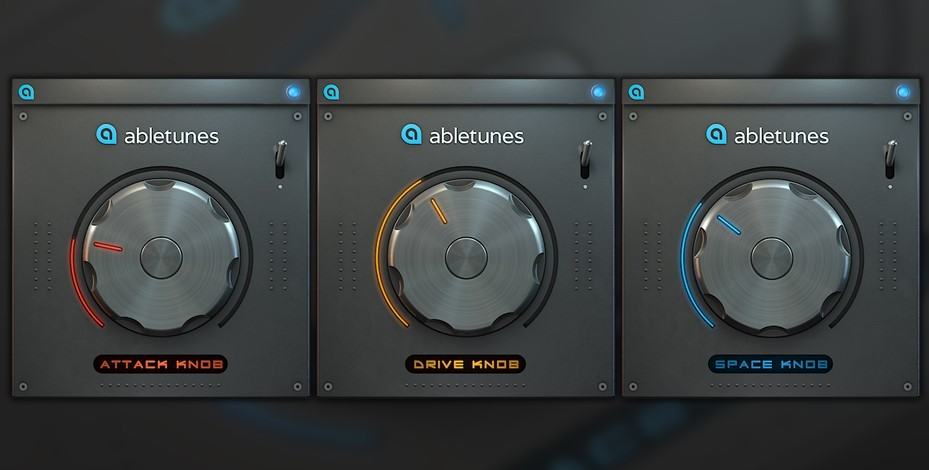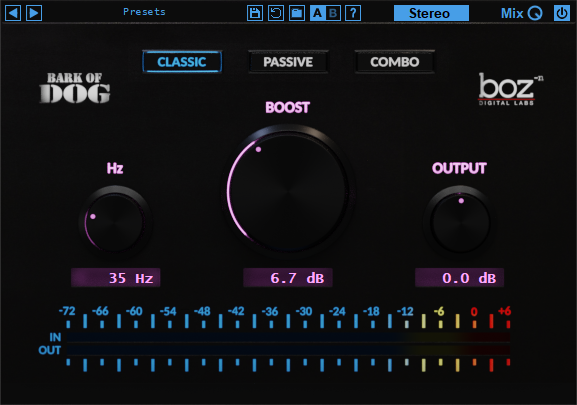Article Content
It’s the end of the month, and your bank account is empty…
Yes, you read that right- 400 VSTs completely free of charge! We’ve spent countless days digging through the web to find the very best free plugins. We found close 400 free VSTs of all types, including one VST whose sole purpose is to crash your DAW. Then do it again. The module has 9 controls that will give you fantastic results: The equalizer controls are perfect for sculpting your sound with fast and effective results: “AIR” gently controls the boost or cut of the High Frequencies, “FOCUS” let you adjust the intelligibility of the mids and “BODY” lets you fine tune the amount of low frequencies without.
In this free version, we've combined our favourite profiles from REAMP into one universal profile. When processing audio through FreeAMP you’ll get the sound of tape and tube saturation at the same time. It can be used on anything that needs to be vitalized, from single tracks, stems or full mixes. And the best thing is that it is Totally free!
…again.
Oops.
And as much as you might feel like buying that new Waves plugin…
(You’ve had your eye on it for months, right?)
It’s probably not a good idea.

But if you’re still looking to expand your plugin library, don’t worry.
Sometimes, the best things in life are free…
Here are 7 of my favorite free plugins. Each of them offers something new and unique (no boring EQs or compressors). Download them all to extend your sonic palette and ultimately, craft better-sounding tracks.
And if you’re looking to dive deeper, I also put together a list of five plugins I use on every mix. If you’re wondering which plugins I recommend, download the list below to make sure you’ve got my top tools for the job.
1. iZotope Neutrino
Neutrino is the baby brother of Neutron—iZotope’s newest channel-strip plugin. While Neutron has a number of innovative features, Neutrino spins off the best of them.
Neutrino tames undesirable resonances caused by poor room acoustics, cheap gear, and heavy-handed processing. iZotope calls the effect “spectral shaping,” and it can sound similar to gentle, low-ratio multiband compression. This can make tracks sound smoother and more polished—like sanding the rough edges off a freshly cut piece of wood. I find Neutrino particularly useful on electric guitar tracks, which often have lots of harsh resonances.
2. Voxengo SPAN
People say “don’t mix with your eyes.”
Meh.
The truth?
Tools that provide visual feedback, when used properly, can help you make better mixing decisions.
A spectrum analyzer is one of these tools. It plots the frequencies of sounds out on a graph, which allows you to “see” what tracks are comprised of.
SPAN is my favorite spectrum analyzer. You can control the ballistics and response of its graph, which makes it flexible enough for a wide variety of tasks. You can even route multiple tracks into SPAN and compare their frequency content.
(P.S. Voxengo has a few other free VST plugins. They’re worth checking out too, but SPAN is my favorite.)
3. Brainworx bx_solo
Bx_solo is a no-frills, stereo-imaging plugin. While it’s the least sexy of this bunch, it can still be pretty useful.
I like to add bx_solo to my mix bus. While I rarely push the stereo width past 100%, collapsing it to zero is an easy way to check for mono compatibility. The mid and side solo buttons are also useful. It’s great to have this one around—you never know when you might need it!
4. HOFA 4U Project Time
Mixing is a race against time.
The more time you spend on a mix, the more attached you become to what it sounds like. This makes it progressively harder to make good mixing decisions. Given enough time, even the worst mix will start to sound decent.
This is one reason I recommend mixing quickly and impulsively. You’ll get to the finish line faster, retain more objectivity, and ultimately, craft better mixes.
The first step towards more efficient mixing is to track how much time you spend doing it. Without this information, it’s easy to get lost in a black hole of endless tweaking.
Project Time makes this easy. Add it to a track, and it will start counting. The timer automatically stops when you close the session, and starts when you open it up again.
Keep an eye on Project Time, and you’ll train yourself to mix faster and more efficiently. It’s also an invaluable tool if you bill by the hour!
5. MeldaProduction MFreeFXBundle
MeldaProduction makes some great plugins. They’ve earned the praise of many notable engineers, including mastering guru Ian Shepard.
The MFreeFXBundle contains 30 free VST plugins. They range from workhorse tools like a compressor and EQ, to less common effects like a ring modulator, flanger, and oscilloscope.
If you’re looking to fill some holes in your plugin library, this is a great place to start.
6. Flux BitterSweet
BitterSweet is among the best transient shapers out there. It can produce results on par with studio mainstays like SPL’s Transient Designer and Waves’ Trans-X.
This simple plugin can achieve a wide variety of effects. Turn the knob to the right to add punch to drums, enhance the pluck of an acoustic guitar, or boost the consonants in a vocal performance. Turn the knob to the left to soften tracks and push them back in the soundstage.
7. iZotope Vinyl
Sometimes a little crackle is a good thing.
Vinyl will make tracks sound like they’re being played on a turntable. You can vary the intensity of the effect by controlling the volume of different types of noise, the degree of wear and tear, and the decade your sound is from. The results range from subtle filtering to Edison phonograph.
This plugin is great for special effects, like filtering down a vocal or making an intro sound tiny.
Moving Beyond Free Plugins: My Favorite Plugins
I hope these 7 free plugins help you craft tracks that sound fresh and unique.
If you’re looking to dive deeper, I also put together a list of 5 plugins I use on every mix. If you’re wondering which plugins I recommend, download the list below to make sure you’ve got my top tools for the job.
Before you go—what’s your favorite free VST plugin? Share your pick in the comment section below.
Bonus: 3 More Free Plugins for Mixing
3 Free Plugins I Use in Every Mix
It’s the end of the month, and your bank account is empty… …again. Oops. And as much as you might feel like buying that new Waves plugin… (You’ve had your eye on it for months, right?) It’s probably not a good idea. But if you're still looking to expand your plugin library, don't worry. Sometimes,
FREE Masterclass: Low-End Mixing Secrets
Downloaded Over 19,455 times!

One Knob Enhancer Vst Free Audacity
Discover how to make your kick and bass hit hard by cutting (NOT boosting) the right frequencies! Plus, more counterintuitive ways to get fuller yet controlled low-end in your mix. Download this 40-minute workshop by Matthew Weiss, now for FREE!

Description
Designed for stereo, group, aux, or bus channels, Width makes true stereo panning and stereo flip a breeze via a single control knob. Plus, you can automate Width Knob to create mix contrast and dramatic entrances by moving in and out of the stereo field.
Width Knob—Cracking the CodeOne Knob Enhancer Vst Free Sound
The controls of Width Knob are as follows: starting from the centre, you have a knob that controls stereo width. And that’s about it. From a functional standpoint, the knob set fully clockwise does nothing, keeping the left/right mix at 100%. Moving it counterclockwise to centre reduces the stereo image to mono. Passing through mono to fully counterclockwise reverses the stereo image by degrees until you have 100% left/right panning with the stereo image flipped (right becomes left and vice versa). The design of Width Knob’s interface looks like two green triangles on their side pointing toward each other. They are not only decorative, but they also provide visual indication of the width of the stereo image as you adjust. Once you pass centre position going counterclockwise, the colour of the stereo field indicators changes to a reddish-brown (burnt umber, or if you happen to be scoring a Robert Rodriguez film, burnt hombre).Width or Width Out YouFull stereo width is not the point of Width Knob. Its ability to reduce a stereo image is, enabling you to give various instruments or groups of instruments their own space in the stereo field. One example would be taking a synth bass recorded in stereo and narrowing it to mono for a punchier centre image and making room for other instruments panned left and right, such as guitars or keyboards. Another use for a narrower field would be in the case of stereo background vocals that are too wide, causing the harmony to de-correlate. Narrowing the image will create a better harmonic blend while still maintaining the feel of a vocal ensemble in stereo space.
The ability to create contrast in a mix is another easily achieved benefit of Width Knob. While front-to-back depth is a subtle way to create spatial contrast, you can achieve a far more dramatic effect by taking advantage of the left/right stereo field. For example, keeping certain instruments closer to the centre image during verses and then expanding outward to full left and right creates a dramatic entrance for a song’s chorus. It also makes the mix feel wider (without phase issues). For example, use Width Knob to reduce the left/right image of the drums to say, 70%, so that when hard-panned heavy guitars kick in, for example, you get the dramatic effect of the guitars filling out the stereo field, plus the illusion of the mix the moving outside the speakers
Features
- Quickly adjust width
- One knob width and channel swap
Download
We dont host any software files here. The download button will take you to the Boz Digital Labs website where you can download the software direct.
Download Width Knob From Boz Digital Labs Website